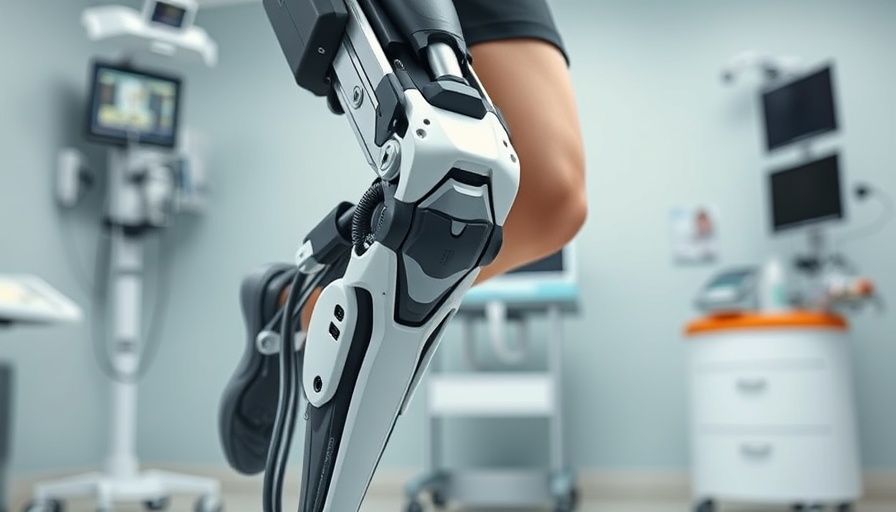
Revolutionizing Prosthetics: A New Era for Amputees
In a groundbreaking advancement in prosthetic technology, researchers at MIT have developed a bionic knee that promises to redefine what it means to be an amputee. Seven years of research have culminated in a prosthetic device that feels less like an artificial tool and more like a natural part of the body. This innovation, described as a three-layered tissue-integrated prosthesis, aims to enhance the mobility and comfort of lower leg amputees markedly.
Understanding the Three Layers of Innovation
The bionic knee comprises three essential layers that work in unison. The first layer includes a restoration mechanic that reconnects muscle tissue directly to the prosthetic, recreating the push-pull functionality typically reserved for a biological limb. This connection not only allows amputees to exert force through muscles but also restores a sense of proprioception—the awareness of limb positioning that the human body naturally possesses.
The second layer involves a titanium rod anchored directly into the femur, eliminating the traditional socket-based designs that can cause discomfort and fatigue. By redistributing the weight more naturally, this innovative design helps prevent nerve pain and chafing often experienced with conventional models.
Finally, the robotic limb connected to these biological foundations can be upgraded as technology advances, ensuring that patients have access to the best possible prosthetic options throughout their lives. This adaptability is crucial in keeping pace with medical technology advancements and enhancing the overall user experience.
The Impact on Quality of Life
This new design was put to the test at prestigious facilities such as Massachusetts General Hospital, with remarkable results. Patients using this prosthetic showed significantly improved mobility, seamlessly navigating stairs and obstacles with greater ease. The device also garnered higher satisfaction ratings, particularly regarding how well users felt the prosthetic became part of their own bodies. Tony Shu, the project’s lead author, emphasizes the importance of “embodiment” in improving patient well-being. Feeling connected to their prosthetic not only boosts physical performance but also plays a vital psychological role in helping users regain agency over their lives.
Future Trends and Opportunities in Prosthetic Technology
As groundbreaking as this innovation is, it paves the way for further advancements in prosthetic technology. The use of tissue integration in prosthetic designs marks a paradigm shift, where functionality meets bodily integrity. Experts believe that as research continues, even more sophisticated devices will emerge, potentially offering features such as enhanced sensory feedback and improved interaction with the human nervous system.
This evolution in prosthetics can foster increased independence for amputees, allowing them to participate fully in daily activities without the limitations that traditional devices impose. This could lead not only to improved physical health outcomes but also a greater sense of belonging within their communities.
Acting on Knowledge
This bionic knee represents more than just medical innovation; it symbolizes a hopeful future for individuals affected by limb loss. By embracing these advancements and promoting awareness of this new technology, we can cultivate a more inclusive society and support those navigating their unique transformation journeys. Engaging with community resources, offering support, or simply sharing stories amplify the achievements in this field, fostering empowerment among lower leg amputees.
 Add Row
Add Row  Add
Add 




Write A Comment